Ijraset Journal For Research in Applied Science and Engineering Technology
- Home / Ijraset
- On This Page
- Abstract
- Introduction
- Conclusion
- References
- Copyright
Customer Perception Towards Amazon and Flipkart: A Comparative Analysis
Authors: Dr. Somabhusana Janakiballav Mishra, Debasish Rout, Dr. Ranjan Kantha, Binita Majhi
DOI Link: https://doi.org/10.22214/ijraset.2022.42770
Certificate: View Certificate
Abstract
In the world of business, the competition is very high. Every firm, every corporation is in the race to win more and more customers as if they are in a war with one another where one organization attacks another with their strategies and other defends itself. As a world of red ocean where everyone is attacking one another and there’s always danger around them. This war can be distinctively seen in the e-commerce industry. The e-retails websites try to overtake their competitors by adopting new and advanced technologies and strategies to gain better goodwill in the market, which will ultimately increase their web traffic. This study is an insight of the scenario of the two giants e-commerce e-retailers of India. It aims to check the difference between these two giants in India viz. Amazon India and Flipkart under the customer perception towards them.
Introduction
I. INTRODUCTION
A. History of Flipkart
Flipkart.com is an e-commerce company that was founded in the year of 2007 by Mr. Sachin Bansal and Mr. Binny Bansal. They both are the alumni of the Indian Institute of Technology, Delhi. They both had been working for Amazon.com previously. It is operating exclusively in India where its HQ is in Bangalore, Karnataka. The company is registered in Singapore and is being owned by a Singaporean based holding company. Flipkart has launched its own product range under the name “DigiFlip”, Flipkart also launched its own range of personal healthcare and home appliances under the brand “Citron”. During their initial years, Flipkart focused only on books, but soon, expanded and it started offering other products like electronic goods, A/Cs, air coolers, stationary supports, lifestyle products and E-books.
Legally, Flipkart is not an Indian company, rather a Singaporean company because it is registered in Singapore and majority of the shareholders are foreigners. And because foreign companies are not allowed to do multi-branding e-retailing in India, Flipkart sells goods in India through a company called WS Retails so, other third-part sellers or companies can also sell their goods through the Flipkart platform. Flipkart now employs more than 23,000 people where Flipkart has now offered the employees to have a permanent work from home, hence 16,000 full time people and except for a few critical roles, most of them have been working work from home since march 2020, after the outbreaks of the Covid-19 pandemic. Flipkart allows payment methods such as Cash on Delivery (COD), credit/debit card transactions, net banking, e-gift vouchers, card swipe on delivery and now the e-wallets and the UPIs. Flipkart is presently one of the largest and biggest online retailers on India, present across more than 14 products categories and with a reach in around 150 cities. Flipkart is currently 10000 members strong team, with 3000 sellers+ on its platform and delivering 5 million shipments per month.
It made its presence felt in online retailing by offering path breaking services like Cash on Delivery (COD), 30 days re-placement Guarantee, Emi options, Flipkart mobile app etc.
B. History of Amazon.in
Amazon.com founded by Mr. Jeff Bezos in 1994, is an American electronic commerce company with HQ in Seattle, Washington. Jeff Bezos incorporated the company as “Cadabra” on July 5, 1994, and the site went online as Amazon.com in 1995. Bezos changed the name ‘Cadabra.com” to Amazon.com because it sounded too much like cadaver. Additionally, a name beginning with ‘A’ was preferential due to probability due to the probability it would occur at the top of any list that was alphabetized. It is the largest internet-based company in the united-states. Amazon.com started as an online bookstore, but soon diversified, selling DVDS, CDs, video games, electronic, Furnitures, food, toys and jewellery. The company also produces consumer electronic notably, Kindle, Fire Tablets, Fire Tv and phone and is a major provider of cloud computing services.
Amazon has separate retail websites for US, UK and Ireland, France, Canada, Germany, the Netherlands, Italy, Spain, Australia, Brazil, Japan, China, India and Mexico with sites for Sri Lanka and South East Asian countries coming soon. Amazon also offers international shipping to certain other countries for some of its product. In the year of 2011, it had professed an intention to launch its websites in Poland, and Sweden.
In early June 2013, amazon.com had launched their Amazon India marketplace without any marketing campaigns in July, 2013, Amazon had announced to invest $2 Billion (Rs. 12,000 crores) in India to expand business, after its largest Indian rival Flipkart too had announced to invest $1 Billion.
C. Reverse Logistics
Reverse logistics is a type supply chain management that moves goods from customers back to the sellers or manufacturers. Once a customer receives a product, processes such as returns or recycling require reverse logistics.
II. LITERATURE REVIEW
- Ahuja (2018), makes a study on customer perception towards the purchase of electronic goods through Amazon and Flipkart. The study hovers around four basic aspects of viz. Gender and satisfaction level towards Amazon, Gender and satisfaction level towards Flipkart, Income and satisfaction level towards Amazon and Income and satisfaction level towards Flipkart. The paper finds out that males are more interested in purchasing electronic goods online than females. However, people get the interest to purchase electronic goods online only when they are exposed to offers irrespective of their age and income.
- Balasubramanian&Isswarya (2017) in their research paper discusses on the customer satisfaction level between Flipkart and Amazon among the customers in an educational institution. The data were collected from 179 samples who basically post graduate students and the tools for analysis were simple statistical tools like a percentage. The study also ponders upon investigating the major factors that ultimately impact customer satisfaction towards Flipkart and Amazon. The questionnaire focuses upon the various domains which customers generally emphasises upon while shopping online like order tracking and delivery, website usage, product availability, payment procedures etc. The paper concludes by stating that in the war between Flipkart and Amazon; Flipkart wins by providing an efficient delivery system, user-friendly website and exact tracking facility.
- Burt and Sparks (2003) check the interaction between retail processes and e-commerce. The study finds that with the benefits of internet and inclusion of cost reductions methods in operations, one can enhance its competitive position in process, structure and relationship terms. The paper also discusses the benefits of e-commerce and the uncertainty of the future e-commerce industry. The paper concludes by suggesting that new business models and formats should be developed for retailers and e-commerce to improve the activities of all sorts.
- DahiyaRicha (2012), conducts a study on the role of demographic factors and their impact on the shopping behaviour of online customers. The study opines that e-business is a new form of business in India which has tremendous potential. It has been growing significantly ever since its introduction in the country. The author even comments that the The War Between Flipkart and Amazon India: a Study on Customer Perception 393 NAAS Rating: 3.10- Articles can be sent to editor@impactjournals.us field of E-Business will reshape the entire shopping scenario across the globe. Considering it to be the need of the hour every other company is now running their own online portals to sell their products and services.
- Martin dodge. (1999),”finding the source of Amazon.com: examining the hype of the earth’s biggest book store”, center for advanced spatial analysis. Concluded that Amazon.com has been one of the most promising e-commerce companies and has grown rapidly by providing quality service.
- Abhijit mitra. (2013), “e-commerce in India-a review”, international journal of marketing, financial services & management research. Concluded that the e-commerce has broken the geographical limitations and it is a revolution-commerce will improve tremendously in next five years in India.
- D.k.gangeshwar. (2013),” e-commerce or internet marketing: a business review from Indian context”, international journal of u- and e- service, science and technology. Concluded that the ecommerce has a very bright future in India although security, privacy and dependency on technology are some of the drawbacks of e-commerce but still there is a bright future to ecommerce.
III. OBJECTIVE OF THE STUDY
- To study both the top e-retailers (i.e. Flipkart and Amazon India)
- To study the reverse logistics
IV. SCOPE OF THE STUDY
The scope of the study extends to two giants e-retailers of India viz. Flipkart and Amazon India.
V. SIGNIFICANCE OF THE STUDY
The study is an insight into the competitive scenario of the e-commerce industry of India. This study helps us to understand reverse logistics as an integral part of the e-commerce business.
VI. LIMITATIONS OF THE STUDY
- There is very much confidential data of the companies that are not exposed
- The analysis is done based on the personal opinions of respondents individually and not from focus groups or experts.
- Substantial numbers of articles and publications cannot be reviewed due to the target date
- An inadequate sample of students have been surveyed through questionnaires
- The e-commerce as a whole is a big topic, therefore, we have to narrow our focus to business strategies implemented by Amazon and Flipkart India
VII. RESEARCH METHODOLOGY
For this particular study, the researchers have used primary research as a research tool, a questionnaire has been made for taking responses from the 60 people which was circulated through online platforms as few responses can be collected using online questionnaire. For the additional data, the researchers used secondary analysis method to collect data from various websites, case studies, articles, publications.
VIII. DATA ANALYSIS AND INTERPRETATION
- Interpretation: Table 1 represents the age group of the respondents. It can be seen from the following table and chart that mostly are from 18-25 years of age group. 37 respondents are between 18-25 years old and 16 respondents are below 18 years.

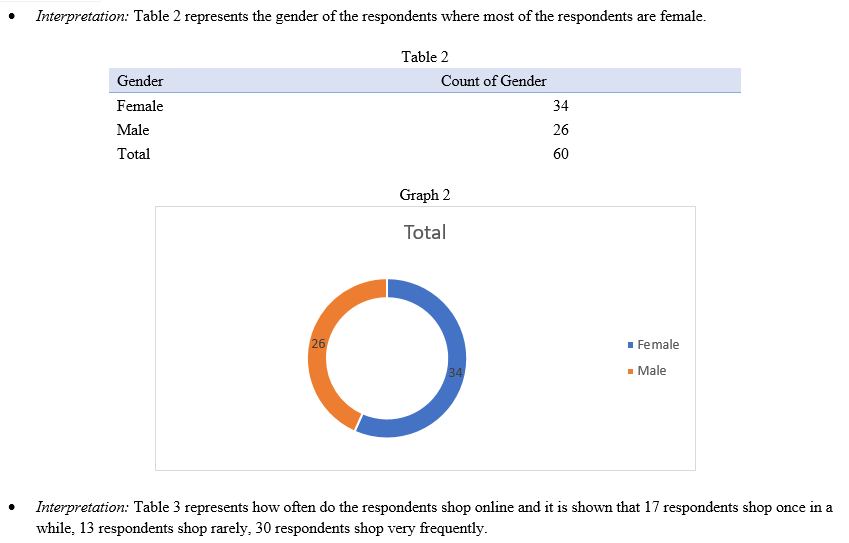
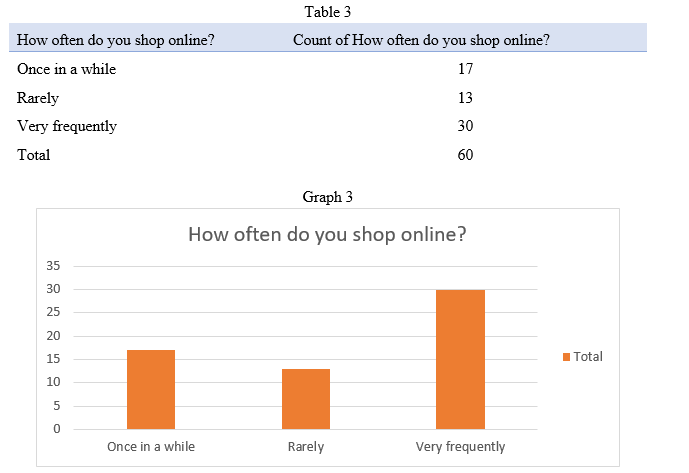
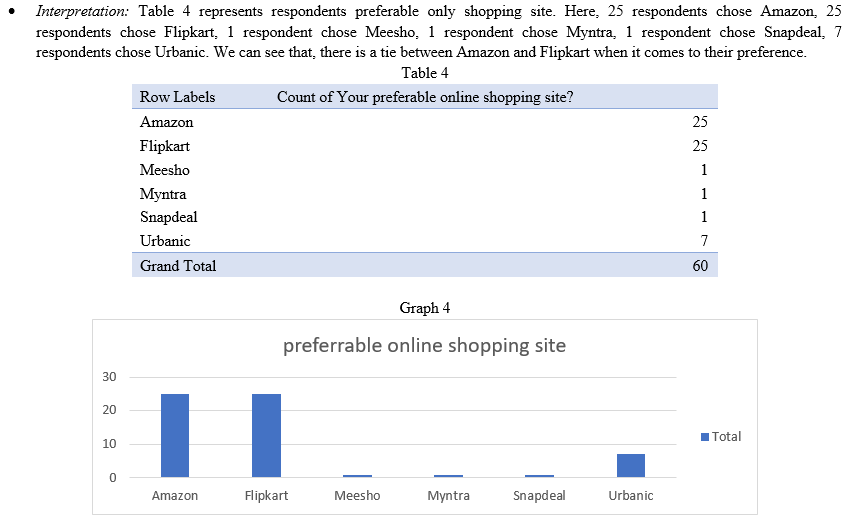
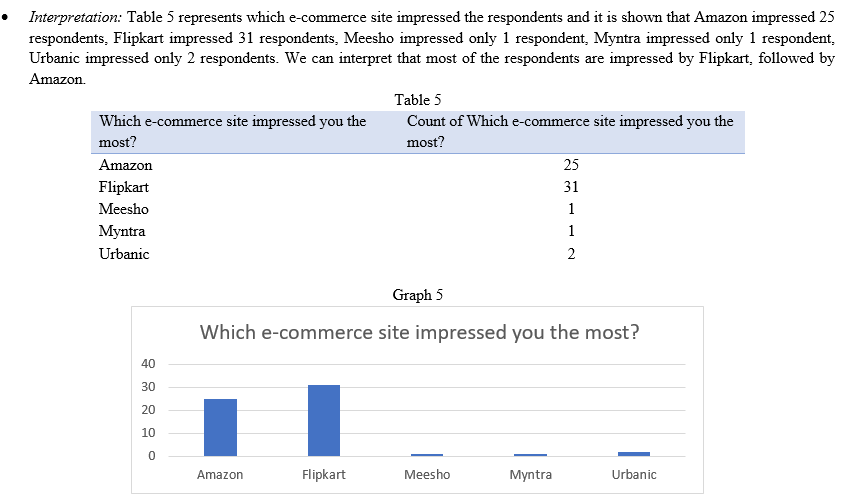
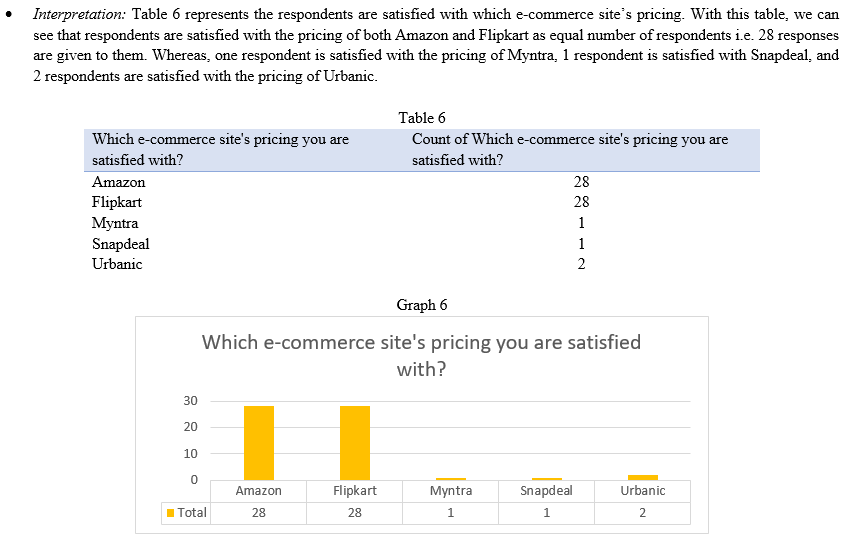
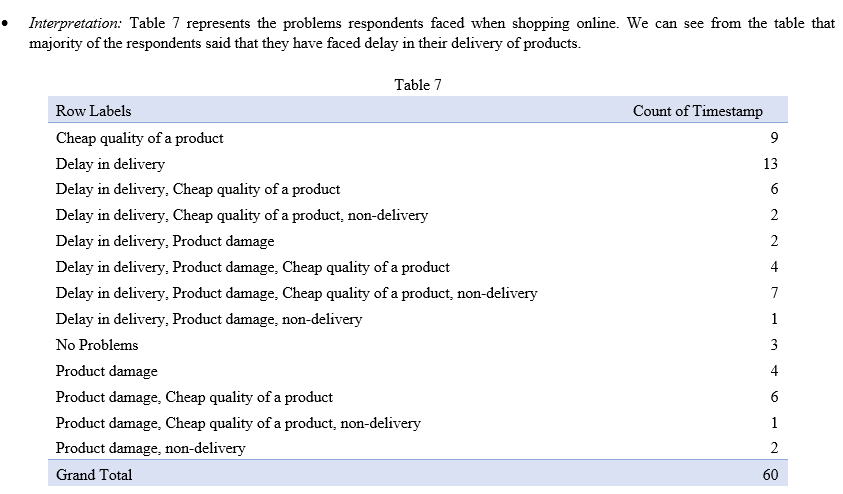
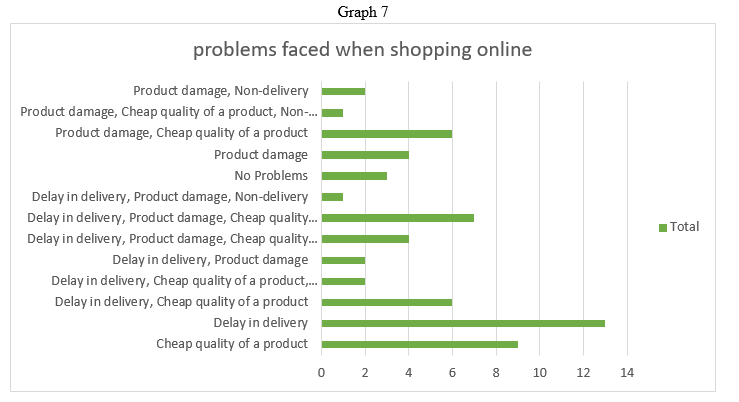
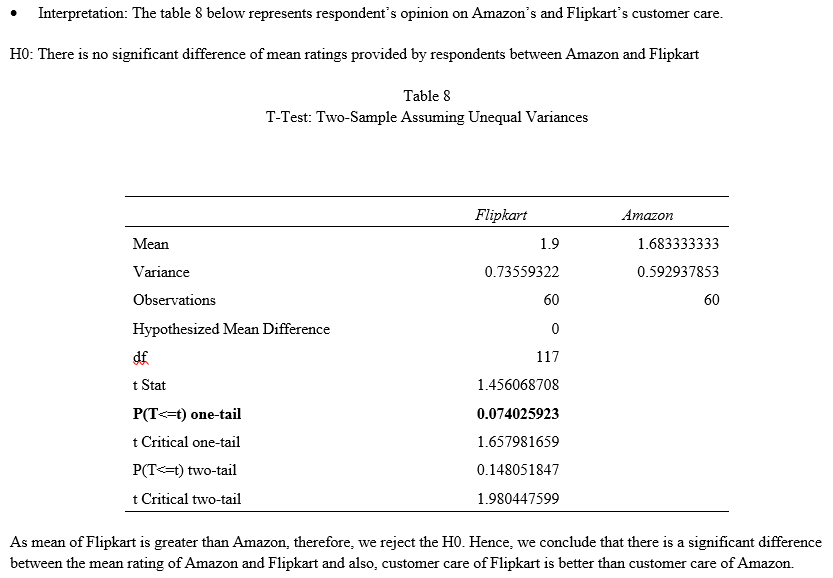
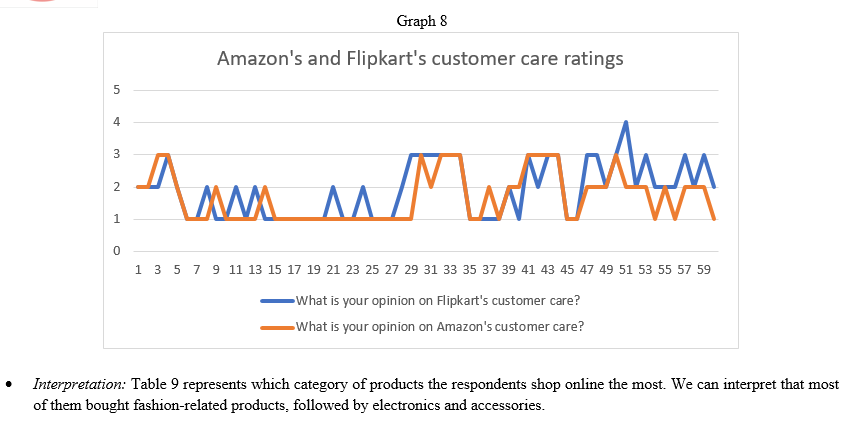
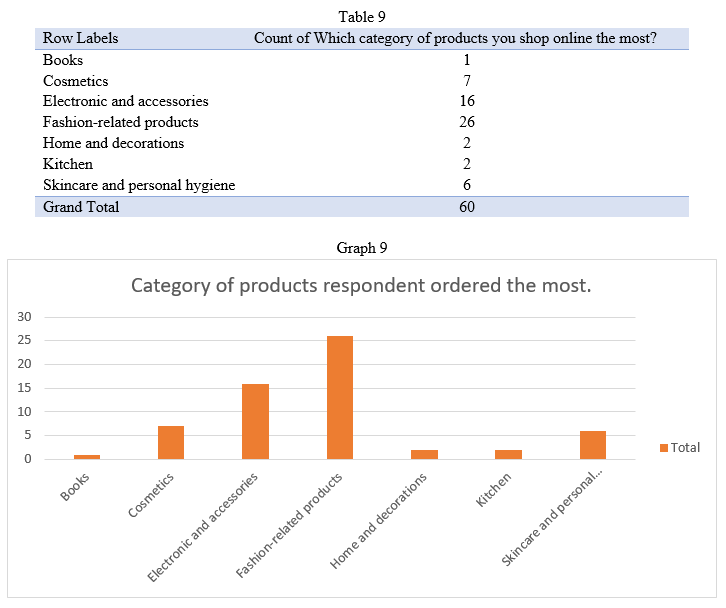
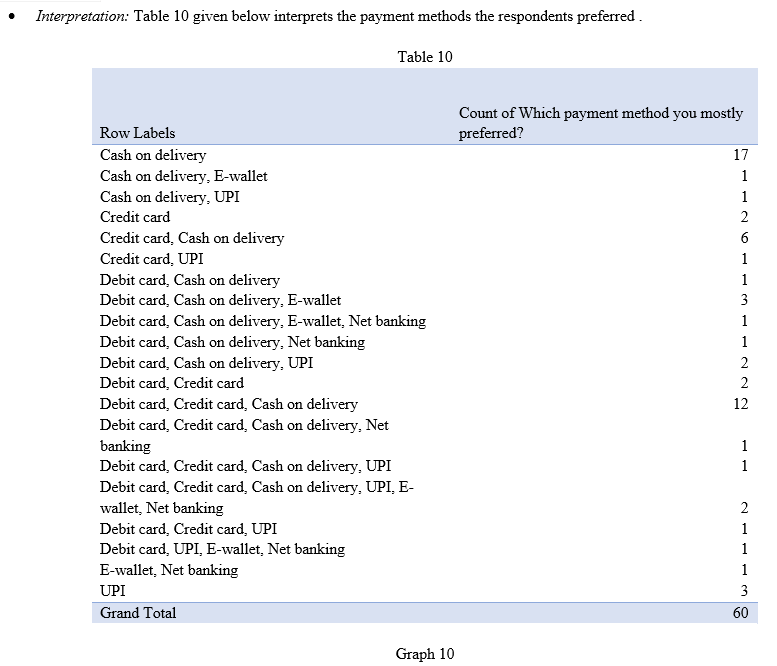
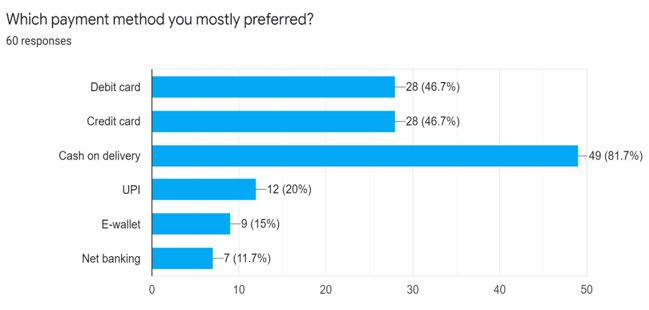

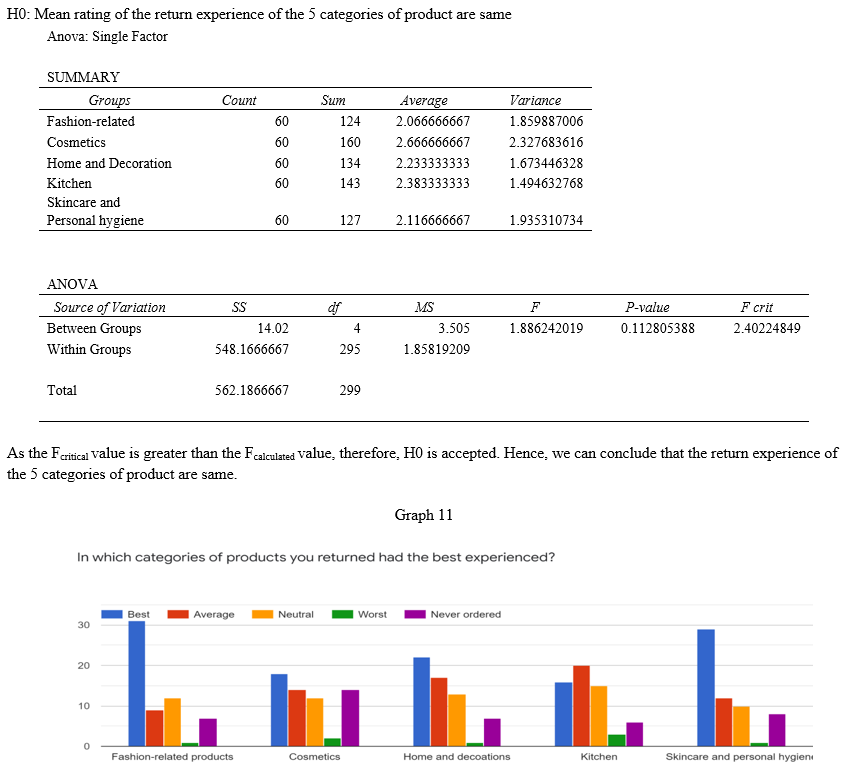
Conclusion
This study throws light on various aspects related to Flipkart and Amazon India. Also, it is seen that Flipkart is better than Amazon in terms of rating. It is also seen that many of the respondents had chosen Amazon and Flipkart in different aspects. And it is proven that Flipkart is the Market leader, it is still observed that respondents also like Amazon India. A valid reason for this would be the wider accessibility of products of superior quality. Also, Flipkart’s customer care is proven to be better than Amazon India. It is also observed that most of the respondents choose cash on delivery followed by debit cards and credit cards. Fashion-related and skincare and personal hygiene are the product categories that are the most returned products and even if they are the high-returned products because of their late delivery or cheap quality of products and but they scored the best on the customer’s return experience, showing the returned products are easily accepted by the seller. It is also observed that the most ordered products are fashion-related products and electronics. It is also observed that there are a lot of ties between the Amazon India and Flipkart like the pricing strategy, their impression on the customers and customer’s preferrable online shopping site. It is also observed both the Amazon India and Flipkart are into deep neck competition. Through people are attracted towards Flipkart, yet it was many of them choose to not retain with Flipkart and rather switch to Amazon India for its better quality and Flipkart should learn from its mistakes and should make a balance between convenience, quality and quantity to retain its leadership position in the long run.
References
[1] Arabzad, S. G.-M. (2015). An Evolutionary algoritham for a new multiobjective location-inventory model in a distribution network with transportation mdel and third party logistic providers. International Journal of Production Research, 53(4), 1038-1050. [2] Ban, G. R. (2018). The big data newsvendor : Practical insights from machine learning. Operation Research, 67(1), 90-108. [3] Barenji A V., W. W.-Z. (2019). Intelligent E-commerce Logistic Platform using hybrid agent based approach. Transportation Research , 15-31. [4] Chen, F. Y. (2001). Analysis of Third-Party warehousing contracts with commitments. European Journal Of Operation Research, 131(3), 603-610. [5] Choi, T. M. (2019). Data quality challenges for sustainable fashion supply chain operations in emerging markets: Roles of blockchain, government sponsors and environment taxes. Transportation Research , 139-152. PJAEE, 17 (6) (2020) 7881 [6] Choi, T. W. (2019). The mean-variance approach for global supply chain risk analysis with air logistics in the blockchain technology era. Transport. Transportation Research, 178-191. [7] Adéle Martins, N. M. (2001). Consumer Perception of Electronic- Commerce. South African Computer Journal, 27-33. [8] Ahmad Ashfaq, R. K.-u.-, (2010). ”An empirical investigation of Islamic banking in Pakistan based on the perception of service quality. ”, African Journal of Business Management, 4 (6), 1185-1193. [9] Ahuja, B. (2018, April). Customer Perception towards Online Buying Of Electronic Products from Flipkart and Amazon. IOSR Journal of Business and Management (IOSR-JBM), 90-96. [10] Anujeet, M. (2013, October 9). Tech2. Retrieved October 6, 2018, from www.firstpost.com: https://www.firstpost.com/tech/news-analysis/amazon-launches-mobile-shopping-app-for-indian-android-users3638409.html [11] Ardura-Inma Rodríguez, A. A. (2008). Factors Influencing the Evolution of Electronic Commerce:An Empirical Analysis in a Developed Market Economy. Journal of Theoretical and Applied Electronic Commerce Research, III (8), 18-29. [12] Aspfors, E. (2010). CUSTOMER PERCEPTION OF SERVICE, STORE IMAGE AND PRODUCTASSORTMENT – FROM AN INTERIOR STORE PERSPECTIVE. VAASA UNIVERSITY OF APPLIED SCIENCES. [13] Burt, S. a. (2003). E-commerce and the retail process. E-commerce and the retail process. Journal of Retailing and Customer Services.
Copyright
Copyright © 2022 Dr. Somabhusana Janakiballav Mishra, Debasish Rout, Dr. Ranjan Kantha, Binita Majhi. This is an open access article distributed under the Creative Commons Attribution License, which permits unrestricted use, distribution, and reproduction in any medium, provided the original work is properly cited.

Download Paper
Paper Id : IJRASET42770
Publish Date : 2022-05-16
ISSN : 2321-9653
Publisher Name : IJRASET
DOI Link : Click Here
 Submit Paper Online
Submit Paper Online

